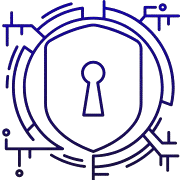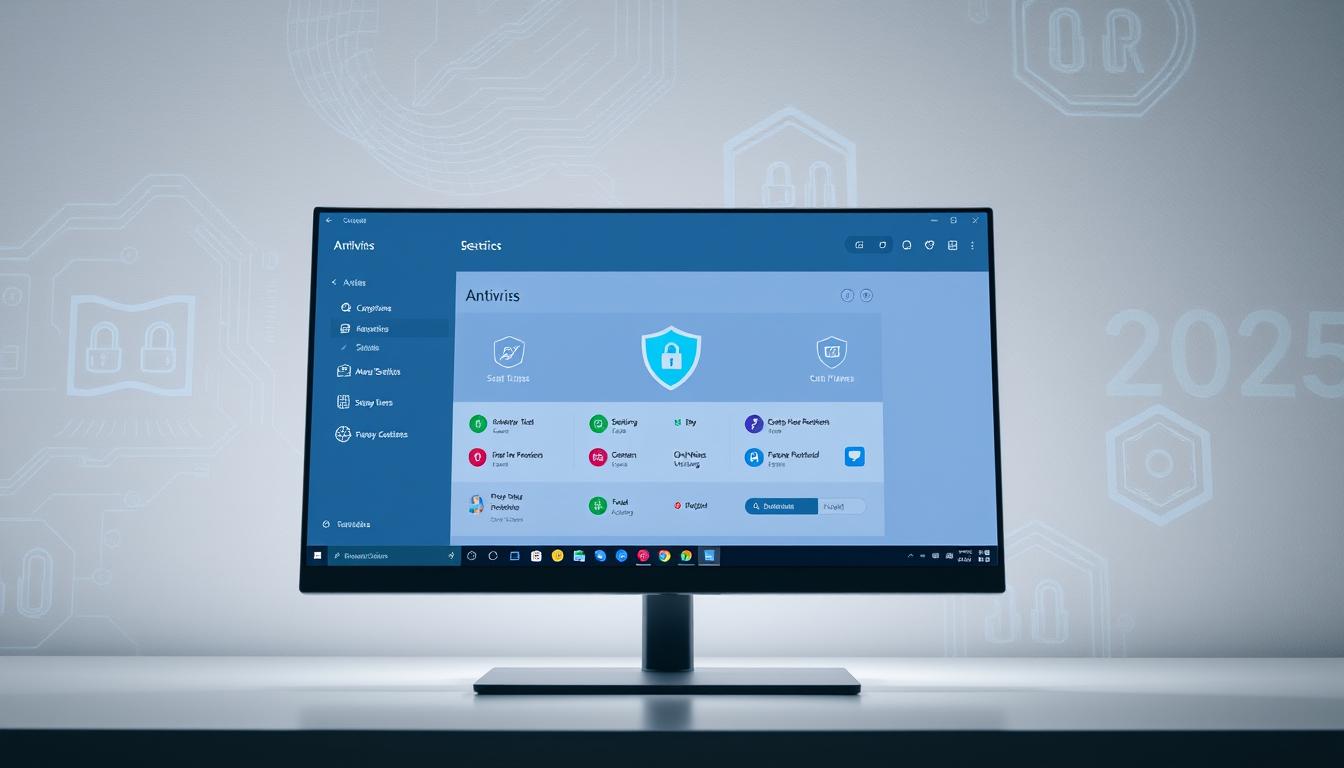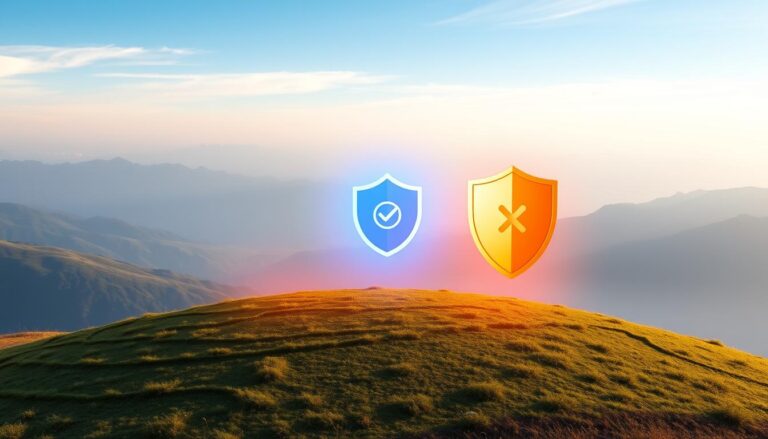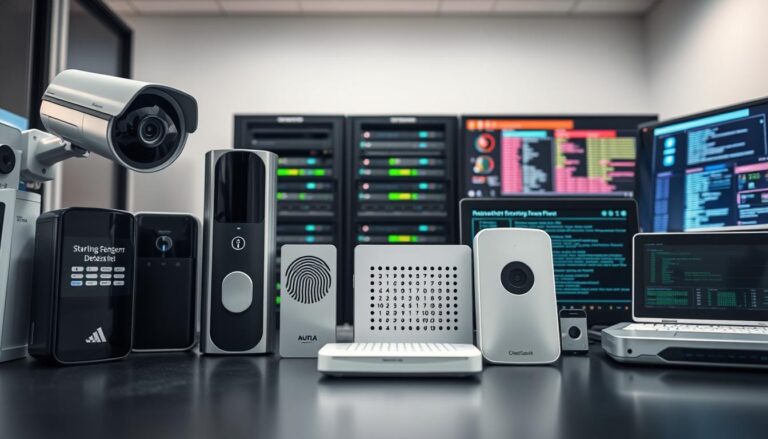Best Antivirus Software for Windows in 2025
Our 2025 roundup looks at top protection options chosen from hands-on tests and independent lab scores. We weigh real-world performance, scan speed, impact, and key features to help U.S. readers pick the right plan.
Threats like ransomware, phishing, and malicious URLs still target many users. Layered defenses with real-time detection and behavior-based blocking matter more than ever to keep malware out and data safe.
Editors’ quick picks include Bitdefender (best overall, lab 9.8/10), Norton (9.6/10, feature-rich), Malwarebytes (fast scans), and McAfee (great single-PC value). We also note lighter, budget options such as Webroot and Sophos Home Premium.
What to expect: lab-aggregate scoring, concrete strengths like multilayer ransomware protection and intelligent firewalls, pricing examples, renewal notes, and device coverage so shoppers can compare subscriptions and total cost.
Read on for testing criteria, quick picks, full reviews, features to compare, pricing and renewals, performance impact, and a concise conclusion with next steps.
Key Takeaways
- We selected top programs using lab data and real-world tests to balance protection and performance.
- Modern threats demand layered, real-time defenses and behavior-based detection.
- Bitdefender and Norton lead in labs; Malwarebytes and McAfee fill niche needs.
- We list pricing examples, first-year offers, and renewal terms to show total cost.
- Lightweight options like Webroot suit users who need small footprint and low price.
Why Antivirus Software for Windows Still Matters in 2025
Even in 2025, Windows remains the main target for threat actors who chase user data and system access. That focus means ongoing protection is critical to keep a computer and personal files safe.
Attacks now blend phishing, malicious URLs, and complex ransomware. Modern protection must add behavior-based detection and strong web protection to stop threats before they run.
Real-time scanning watches downloads, monitors running processes, and blocks dangerous sites. This prevents many attacks from reaching the system at all.
Ransomware can encrypt irreplaceable data. Layered defenses such as protected folders, automatic remediation, and backups reduce the damage and speed recovery.
Zero-day exploits and social-engineering in apps and browsers require constant updates, vulnerability scanning, and smarter firewalls. These features make a practical difference on devices used at home and on the go.
“Third-party protection often adds better phishing defenses and more proactive ransomware controls than default system tools.”
A reliable program gives automated defenses and clear alerts so users can act without technical overload. Choosing the right protection keeps daily computing safe for school, work, and personal use.
| Threat | Why It Matters | Key Feature |
|---|---|---|
| Phishing | Leads to credential theft and fraud | Web and email protection |
| Malicious URLs | Installs stealthy payloads | URL blocking and sandboxing |
| Ransomware | Encrypts files and halts work | Protected folders & remediation |
How We Test and Choose the Best Antivirus Programs
To pick top protection, we combine repeatable lab metrics with live threat simulations on consumer machines.
Independent lab results and real-world ransomware protection
We weigh aggregate lab scores from multiple labs to spot consistent detection and low false positives. Historical data like Bitdefender’s 9.8/10 and Norton’s 9.6/10 guide long-term trends.
Hands-on tests: phishing sites, malicious URLs, and full scan speed
Our hands-on work visits phishing sites and dangerous URLs to check web blocking. Bitdefender and Norton scored 99% in phishing checks in our runs. We time quick checks and a full scan to flag performance trade-offs.
Value metrics: first-year price, renewals, devices, and features
We compare first-year price, renewal rates, device limits, and included features to show subscription cost clearly. Usability, alert quality, and default settings factor into each final score.
| Metric | What We Measure | Example Result | Why It Matters |
|---|---|---|---|
| Lab aggregate | Multi-lab scoring and consistency | Bitdefender 9.8 / Norton 9.6 | Shows sustained detection quality |
| Phishing tests | Blocking of fraudulent pages | Bitdefender 99% detection | Protects credentials and data |
| Full scan | Time and system impact | Measured in minutes on standard PC | Balancing depth with speed |
| Value | First-year price and devices | Bitdefender $49.99 (1 device) | True subscription cost and coverage |
Our Top Picks at a Glance
This quick list pairs each top choice with the user need it best serves so you can decide fast.
Best overall: Bitdefender Antivirus Plus
Why pick it: multilayer protection, excellent lab scores, and solid real-time defenses make Bitdefender the top pick on Windows.
Price snapshot: about $49.99 for one device, $69.99 for three in year one.
Best for extra security features: Norton AntiVirus Plus
Why pick it: an intelligent firewall, Data Protector for ransomware, and suite-like extras give added daily security.
Price snapshot: roughly $59.99 for one device, $84.99 for five in year one.
Best for speedy scans: Malwarebytes Premium Security
Why pick it: very fast quick and full scans, efficient behavior-based detection, and flexible device licensing.
Best for single-PC households: McAfee AntiVirus
Why pick it: a strong single-computer option with good lab marks, basic firewall features, and WebAdvisor included in many offers.
Price snapshot: commonly seen at about $49.99 via third-party sellers for one device.
- Match needs: pick overall protection, extra features, speed, or single-PC value based on your device count and budget.
- What’s next: later sections give full details, lab data, ransomware tests, and renewal notes to help you compare subscriptions and long-term price.
Bitdefender Antivirus Plus: Best Overall Protection
Bitdefender blends layered defenses and easy setup to protect daily use without constant tweaking. Its mix of behavior-based detection, dedicated ransomware protection, and fast remediation aims to stop threats and restore affected files quickly.
Standout features
- Multilayer ransomware protection: behavior-based blocking, dedicated ransomware shields, and Ransomware Remediation to recover encrypted data.
- Hardened browser: isolated banking session, tracker blocking, and vulnerability scanning to boost web safety beyond basic antivirus protection.
- Usability: enable Autopilot, schedule scans, and add protected folders to guard critical locations with minimal user input.
Lab performance and real-time highlights
Bitdefender posts an aggregate lab score of 9.8/10, with many independent labs giving near-perfect results. In phishing tests it detected 99% of samples, and its web defenses limit malicious URL exposure before a harmful payload runs.
Pricing and subscription notes
First-year price is typically $49.99 for one license and $69.99 for three devices. Full VPN access needs a separate subscription, so weigh bundled convenience against standalone services. The three-device plan often offers better per-device value for small households and is worth considering at renewal.
| Plan | First-year price | Best use |
|---|---|---|
| 1 device | $49.99 | Single-user PC |
| 3 devices | $69.99 | Small households |
“Top lab scores and remediation tools make this program a strong choice for balanced protection and ease of use.”
Norton AntiVirus Plus: Best for Extra Security Features
Norton AntiVirus Plus bundles practical defenses that suit users who want extra protection without juggling multiple apps. The package centers on folder hardening and an unobtrusive firewall, plus suite-style utilities that simplify maintenance on a single PC or across several devices.
Data Protector and intelligent firewall
Data Protector locks designated folders by blocking unauthorized changes. This stops most ransomware attempts from encrypting key files and helps contain damage when other controls are bypassed.
The intelligent firewall filters inbound and outbound connections without constant pop-ups. It balances strong protection with low user friction so fewer alerts interrupt daily work.
Lab performance and phishing accuracy
Norton posts an aggregate lab score of 9.6/10 across tracked labs. In hands-on runs it hit 99% accuracy against phishing sites and blocked 99% of malware-hosting URLs, showing well-rounded detection and web protection.
“Data Protector blocked unauthorized folder changes even when other layers were disabled.”
Price, devices, and when to step up
Pricing runs about $59.99 for one device in the first year and $84.99 for five devices. Families or multi-device households often find the five-device tier better value at renewal.
| Plan | First-year price | Best use |
|---|---|---|
| 1 device | $59.99 | Single PC users who want suite extras |
| 5 devices | $84.99 | Small households and multi-device families |
Usage tips: add critical folders to protected locations early, review firewall notices weekly, and schedule scans to catch stealthy threats.
Who this suits: users who want strong detection, ransomware protection, and built-in maintenance tools in one subscription—without assembling separate programs. Norton remains a feature-forward pick that balances protection, usability, and multi-device value.
Malwarebytes Premium Security: Best for Speedy Scans
Malwarebytes focuses on quick, targeted scans that minimize disruption during daily use. It blends fast checks with behavior-based detection to spot suspicious activity early.
Behavior-based detection reacts to unusual processes and blocks exploits that target the operating system. An exploit shield helps close common attack paths specific to modern PCs.
Ransomware testing and real-time tools
In labs Malwarebytes scored 9.9/10 on malware blocking and hit 96% on anti-phishing. Web filtering showed room to grow (about 83% on malware-hosting URLs). Ransomware tests stopped all samples, though behavior shutdown sometimes allowed partial file encryption before neutralization.
Flexible licensing and extra features
- Pricing: single license at $44.99, two-device starter at $49.99 with scalable per-device add-ons.
- Tools: breach scans for exposed credentials and Windows 11 tweaks to improve compatibility.
- Best fit: users who value fast scans, tight behavior detection, and precise device-based subscriptions.
Tip: keep real-time protection enabled, schedule quick scans, and practice cautious browsing to reduce exposure.
McAfee AntiVirus: Best for Single-PC Households
McAfee’s single-PC edition aims to deliver strong lab-grade protection without a multi-device price tag.
Independent labs give McAfee a near-perfect aggregate of 9.8/10, and the product includes a money-back virus protection pledge that adds buyer confidence.
Included protection and practical extras
On a single Windows device you get a basic firewall, the WebAdvisor browser extension to flag unsafe links, activity cleanup tools, file shredding, and cryptojacking prevention.
These features help block many common threats and keep daily browsing safer without extra configuration.
Limitations and test notes
Compared with full suites, this edition lacks unlimited-device coverage and advanced utilities found in McAfee+ bundles. It also missed one ransomware sample and a whole-disk wiper-style attack in hands-on testing.
“Most threats were stopped, but two serious samples succeeded—so backups and good habits remain essential.”
| Item | What you get | Note |
|---|---|---|
| Lab score | 9.8 / 10 | Near-perfect detection |
| Device coverage | 1 device | Upgrade to suites for more devices |
| Price | ~$49.99 | Often sold via retailers |
Who should pick it: solo users who want powerful core protection for one system without paying for multi-device subscriptions.
Enable all protections, keep definitions updated, run routine scans, and maintain backups. Households with more than one device should compare suite options to get broader tools and better per-device value.
Sophos Home Premium and Webroot Essentials: Lightweight Value Picks
For older machines and minimalists, small-footprint protection can keep daily browsing safe and snappy. These two options focus on core defense without the bulk of full suites.
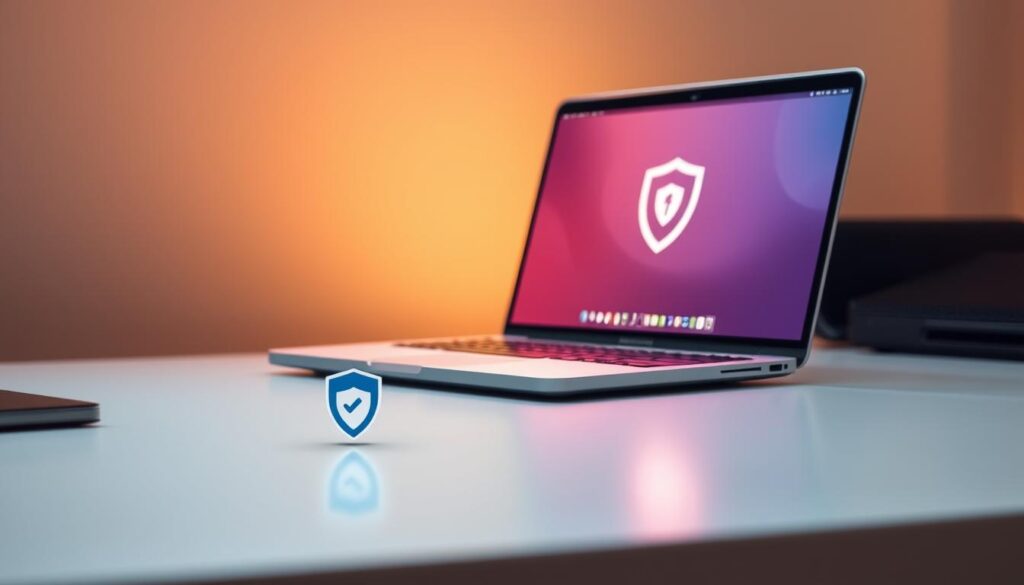
Why thrifty users and small-footprint fans like these options
Sophos Home Premium is a good pick when you want essential protection, simple web defenses, and easy remote management at a modest price. It fits users who want solid baseline security without extra frills.
Webroot Essentials stands out for a tiny install and very low system impact. Its one-device, one-year plan often lists at $25, which appeals to cost-conscious buyers who need basic protection on a single PC.
- Low system impact: both programs favor fast installs and minimal background load, ideal for older rigs.
- Core defenses: phishing and common malware blocking come standard, though advanced ransomware tools are limited.
- Match by needs: best for single-PC setups or minimal device counts to avoid paying for unused features.
- Renewal caution: compare renewal rates and device coverage so savings hold up after year one.
Bottom line: choose these lightweight picks to save money and CPU cycles, but pair them with safe browsing habits, regular updates, and backups. If you need VPNs, password managers, or deep remediation tools, consider one of the fuller suites covered earlier.
G Data Antivirus and Other Notables to Consider
G Data slots into the midrange market with a broad feature set and a bargain entry price. At about $29.95, it competes as a value alternative to higher-cost options.
What it offers: on-demand and real-time protection, behavior monitoring, and web defenses that match common threat patterns in 2025. These tools help block malware and risky sites with moderate system impact.
Breadth of features and where it fits
G Data excels when you want balance: decent protection, reasonable performance, and a wider feature set than many entry-level programs. It does not pack every premium extra, but it outpaces some budget rivals.
- Compare labs: check independent test results and hands-on ransomware runs to confirm detection and remediation.
- Value notes: review device limits and renewal fees to ensure ongoing cost-effectiveness.
- Setup tips: enable auto-updates, schedule regular scans, and add protected folders if available.
“A mature option for buyers who prioritize cost control while still wanting solid protection.”
| Item | Why it matters | Quick takeaway |
|---|---|---|
| Price | Introductory cost | $29.95 — strong entry value |
| Core defenses | Real-time, behavior, web | Good baseline coverage |
| Best fit | User needs | Cost-conscious Windows users seeking features |
Antivirus Software for Windows: Key Features to Compare
Good protection starts with a clear checklist of what a security package must do on a daily PC. Use this list to compare how each product protects browsing, files, and running apps.
Real-time protection, full scan modes, and behavior monitoring
Real-time protection watches downloads, on-access file activity, and processes. It stops threats before they run.
Full scan modes dig deeper and should be tunable to limit impact during work hours.
Behavior monitoring flags unusual activity that signature detection might miss.
Ransomware protection and remediation
Protected folders block unauthorized changes to critical files.
Remediation features roll back or restore files if encryption starts, cutting recovery time.
Phishing and malicious URL blocking
Strong web filters block phishing sites and drive-by downloads. That prevents credential theft and many infections before they reach the system.
- Configuration: schedule scans, exclude trusted apps, and enable heuristics to balance performance and safety.
- Advanced shields: hardened browsers, intelligent firewalls, and exploit protection secure apps and sessions.
- Integration: look for smooth compatibility with built-in Windows defenses to avoid conflicts.
- Usability: dashboards and alerts should give clear, actionable details without noise.
- Prioritization: heavy web users need top anti-phishing; those with sensitive files should favor strong ransomware protection.
“Try a trial to verify performance impact and ease of use on your actual system.”
| Feature | Why it matters | What to check |
|---|---|---|
| Real-time detection | Stops threats immediately | Low false positives, quick updates |
| Ransomware protection | Prevents file encryption | Protected folders, remediation tools |
| Phishing/URL blocking | Protects credentials | Browser integration and link scanning |
Privacy and Extras: VPN, Password Manager, and Identity-Savvy Tools
Many security suites now bundle privacy extras that extend basic protection into real-world privacy tools.
VPNs: some vendors include a limited vpn with a base plan, while full-featured access often needs a separate subscription. Bitdefender’s model is a common example: bundled access is capped and a standalone plan unlocks unlimited servers and data.
Regional limits: check availability — Avira Phantom VPN, for example, cannot be used inside India because of logging rules, though it works when traveling abroad.
Password managers and identity tools
Password manager bundles reduce credential reuse and speed logins across apps and sites. They add clear daily value when they store strong passwords and autofill securely.
- Identity extras: breach monitoring, tracker blocking, and secure browsers add privacy beyond core protection.
- Verify whether extras are tied to higher tiers or auto-renew with the main subscription; that affects true price and value.
- Confirm device and OS support so vpn and manager features run across your machines and mobile devices.
“Extras can replace separate apps — but only if the tools are fully featured and match your privacy needs.”
| Feature | What to check | Why it matters |
|---|---|---|
| VPN | Data limits, server access, logging policy | Protects browsing on public networks |
| Password manager | Encryption, multi-device sync, autofill | Stops password reuse and speeds logins |
| Identity tools | Breach alerts, tracker blocking | Helps protect accounts and data |
Bottom line: extras are useful when they replace separate apps at a fair subscription price. Review data handling and feature details to avoid paying for tools you won’t use.
Free Antivirus vs Paid Antivirus: What You’re Really Getting
Free scanners can catch common threats, but they rarely match paid tiers in depth and recovery tools.
Baseline free antivirus typically gives on-demand or simple real-time scans that remove common malware. It can help clean an infected PC and block obvious threats.
Paid options add layered protection: behavior monitoring, anti-phishing, malicious URL blocking, and ransomware shields like protected folders and remediation. Top paid picks such as Bitdefender and Norton pair strong lab scores with these extra features.
- Free editions often display ads or push upgrades and lack extras like a password manager, VPN, or identity tools.
- Paid plans commonly include multi-device coverage and centralized management that help households get better value.
- Some free tools work well as cleanup aids after an infection, but they are not ideal as a lone, ongoing protection layer.
“If you handle banking or sensitive files, a minimal paid plan can cut risk significantly compared with free options.”
Try a free trial of a paid product to compare detection, performance, and included features before buying a subscription. And keep strong browsing habits, frequent updates, and reliable backups regardless of the choice.
| Item | Free edition | Paid plan |
|---|---|---|
| Detection | Basic malware | Layered detection + behavior |
| Ransomware | Limited | Protected folders & remediation |
| Support & value | Self-help only | Priority support, multi-device |
Pricing, First-Year Deals, and Renewal Gotchas
What looks like a bargain at checkout can double when the plan auto-renews next year. Promotional rates often hide renewal increases, and small print controls how much you pay after the first year.
Understanding promotional pricing and auto-renew terms
Vendors advertise a low price for the first year to win buyers. Bitdefender lists about $49.99 for one device and $69.99 for three in year one, while Norton often shows $59.99 for a single PC or $84.99 for five. These entry numbers can jump at renewal.
Always read the subscription fine print. Look for auto-renew clauses, stated renewal rates, and how refunds or prorated changes work if you switch plans mid-year.
Per-device cost, multi-device bundles, and home network coverage
Multi-device bundles usually lower the effective per-device price. For example, a five-device plan can beat buying five single-device licenses.
Malwarebytes scales pricing by exact device count, which helps avoid paying for unused licenses. McAfee deals via third parties may show discounted first-year offers but can complicate support and renewals.
- Compare first-year price to the stated renewal rate.
- Count all desktops, laptops, and extra devices on your home network before buying.
- Check regional limits on bundled features like VPN access; that affects true value.
“Set a calendar reminder before renewal and compare current offers to avoid paying full retail.”
| Example | First-year price | Renewal tip |
|---|---|---|
| Bitdefender | $49.99 (1 device) | Expect higher year-two rate; check auto-renew |
| Norton | $84.99 (5 devices) | Good per-device value; confirm renewal total |
| Malwarebytes | $49.99 (2 devices) | Scale by devices to trim long-term cost |
Practical steps: disable auto-renew if you prefer shopping promos, call support to ask about retention discounts, and evaluate two- to three-year totals to judge real value for your Windows PCs.
Performance and System Impact on Windows PCs
How a protection suite uses CPU, disk, and memory determines daily responsiveness. That resource use is the main factor in whether a machine feels snappy or sluggish during normal tasks.
Quick scans and efficient full scan runs reduce interruptions. Malwarebytes is notable for fast quick scans that finish in minutes, so routine checks do not stall work. Schedule deeper scans during idle hours to avoid clashes with heavy apps or backups.
Balancing deep checks and everyday speed
Feature-rich products like Bitdefender and Norton run more background tasks. They offer strong lab-backed protection but may increase footprint unless you tune settings.
Use smart-scan modes, exclude trusted large folders when safe, and limit simultaneous background updates to keep the system responsive.
- Lightweight picks: Webroot Essentials and similar tiny installs suit older devices or limited hardware.
- Monitor usage: check CPU and disk I/O during scans and tweak scheduled times or scan intensity if you see drops in performance.
- Keep engines current: regular definition updates improve detection accuracy without extra strain when done incrementally.
“Test a trial on your own machine to measure real-world impact before committing to a subscription.”
| Area | What to watch | Practical tip |
|---|---|---|
| Scan speed | Quick scans vs. full scan time | Use quick scans daily; full scans weekly at idle |
| System load | CPU and disk during background tasks | Schedule heavy work outside scan windows |
| Behavior monitoring | Overhead vs. detection | Keep default profiles unless you see issues |
Run trial versions and monitor how apps and programs respond. Periodically review settings after major updates to keep the balance between protection and speed right for your devices.
Security for Everyday Life: Phishing Sites, Ransomware, and Data Safety
Keeping data safe starts with simple habits paired with layered protection that catches what people miss.
Use an antivirus app with strong anti-phishing and URL blocking to reduce credential theft and drive-by malware. In hands-on checks, top picks reached 99% phishing detection and blocked 99% of malware-hosting URLs—proof that built-in web filters matter.
Email and download hygiene: scrutinize unexpected attachments and links. Scan new apps and installers before running them. Avoid untrusted sources and review requested permissions to limit system compromise.
Email, browsers, and app download hygiene
Keep browser extensions minimal and update them often. Rely on reputation services inside your protection tools to flag risky sites and phishing sites. If a link looks odd, open the site directly from a known address instead of clicking.
Enable protected folders and behavior-based detection to limit ransomware impact. Combine these with regular offline or cloud backups so files can be recovered if encryption starts.
“Layered defenses and good habits cut exposure dramatically—update, back up, scan, and verify links.”
- Enable two-factor authentication and use a password manager to protect accounts.
- Patch Windows and apps promptly to close exploit paths.
- Use a VPN on public Wi‑Fi when handling sensitive data, noting regional limits on vendor VPNs.
- Scan new installers and avoid pirated or unknown app sources.
| Risk | Daily step | Why it helps |
|---|---|---|
| Phishing | Verify senders; use web filters | Stops credential theft and fake sites |
| Malicious URLs | Use reputation-based blocking | Prevents drive-by installs and payloads |
| Ransomware | Protected folders + backups | Limits file loss and eases recovery |
Checklist: update, back up, scan, and verify links. These habits work with your protection tools to reduce everyday risk and keep data safe.
Comparison Table: Features and Value Across Top Antivirus Programs
This side-by-side view lines up platforms, core protection, standout features, and first-year subscription pricing. Use it to shortlist two or three programs, then read their full sections for deeper details and practical guidance.
Quick look at platforms, features, and subscription tiers
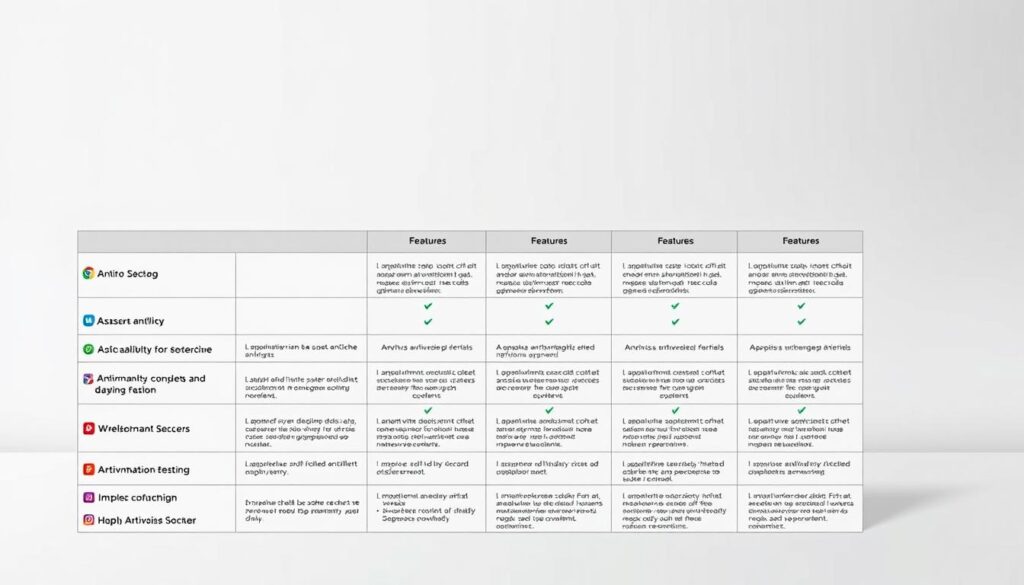
At a glance: lab aggregates give a sense of detection consistency, while listed features and device counts show real-world value. Renewal notes flag where promos may rise in year two.
| Program | Lab score | Key features | First-year price (devices) |
|---|---|---|---|
| Bitdefender Antivirus Plus | 9.8 / 10 | Multilayer ransomware remediation; hardened browser; strong web protection | $49.99 (1) • $69.99 (3) |
| Norton AntiVirus Plus | 9.6 / 10 | Data Protector (protected folders); intelligent firewall; suite extras | $59.99 (1) • $84.99 (5) |
| Malwarebytes Premium Security | 9.9 / 10 | Very fast scans; flexible device licensing; behavior-based detection | Flexible per-device pricing (example: $44.99 single) |
| McAfee AntiVirus | 9.8 / 10 | Single-PC focus; basic firewall; WebAdvisor; core remediation | ~$49.99 (1) via third-party sellers |
| Webroot / Sophos | Varies (value picks) | Small install, low system impact; basic web and phishing protection | Webroot often ≈ $25 (1) • Sophos moderate multi-device tiers |
Notes: VPNs, password managers, and backup tools may be limited to higher tiers or need separate subscriptions. Check renewal rates—promotional prices often increase in year two.
“Use the table to narrow choices, then read product sections to confirm performance and real costs for your device mix.”
- How to use this view: match device count and must-have features first (ransomware shields, web filters, or low impact), then weigh lab score and price per device.
- Value tip: multi-device bundles usually lower per-device cost; lightweight picks suit older machines and tight budgets.
Remember: the right pick balances protection, features, and subscription cost—no single metric answers every use case.
Conclusion
,Pick protection that fits your daily habits and device count to get the best mix of security and value.
Our editors’ standouts—Bitdefender and Norton—lead on lab scores and features. Malwarebytes and McAfee excel for speed and single-PC value. Shortlist by category to match needs, then check first-year deals and renewal price details before you buy.
Enable core defenses right after install: real-time shields, web filtering, and ransomware safeguards. Combine these tools with updates, regular backups, and cautious clicking to cut exposure to malware and phishing.
Try trials or money-back pledges to confirm performance on your Windows machines. Pick the plan that fits your budget, confirm subscription terms, and secure all devices today.
FAQ
What is the best antivirus program for Windows in 2025?
The top choice depends on needs. Bitdefender Antivirus Plus leads for overall protection with multilayer ransomware defense and a hardened browser. Norton AntiVirus Plus is best if you want extra security features like intelligent firewall and data protector. Malwarebytes Premium Security shines for fast, behavior-based scans, and McAfee AntiVirus is a good pick for single-PC households seeking strong baseline protection.
Why does antivirus protection still matter in 2025?
Threats keep evolving: ransomware, fileless attacks, and sophisticated phishing campaigns target home users and small networks. Real-time protection, behavior monitoring, and URL filtering stop many attacks before they run, while backups and remediation tools limit damage if an infection occurs.
How do independent lab results influence choice?
Labs like AV‑Comparatives, AV‑Test, and SE Labs perform standardized checks on detection rates, false positives, and real-world ransomware simulations. High lab scores show consistent detection and protection, which should weigh heavily along with hands-on testing when selecting protection.
What hands-on tests should I look for in reviews?
Look for phishing-site blocking, malicious URL detection, full-scan speed and system impact, and real-world ransomware trials. Reviewers should test scheduled scans, background performance during common tasks, and how well the product remediates infected files.
How important is first‑year price versus renewal cost?
Promotional first‑year prices can be attractive, but renewal rates often jump. Compare the initial deal with the regular annual cost, per-device pricing, and whether a plan covers multiple devices or the whole home network to evaluate long-term value.
Do free antivirus apps provide enough protection?
Free options offer baseline malware detection and basic real-time protection, but they usually lack multilayer ransomware safeguards, phishing filters, identity tools, and priority support. For layered defenses and privacy extras like a password manager or VPN, paid tiers are often worth the cost.
What ransomware protections should I expect?
Effective ransomware protection includes behavior-based detection, protected folders, rollback or file recovery, and network protections to stop lateral spread. Look for automatic remediation and cloud backups or integration with Windows File History for recovery options.
How does real‑time protection differ from scheduled full scans?
Real-time protection monitors files, processes, and network activity continuously to block threats as they appear. Full scans examine all files on demand or on a schedule to catch dormant or missed threats. Both are important: real-time for prevention, full scans for thorough cleaning.
Are built-in Windows security tools enough?
Windows Defender (Microsoft Defender) has improved and offers solid baseline defense, but third‑party suites often add stronger phishing blocking, advanced ransomware shields, privacy tools, and better lab scores. For users who need extra layers or better performance, a dedicated product makes sense.
Should I choose a suite with a VPN and password manager?
Bundled VPNs and password managers add convenience and value when they are full‑featured. Check VPN speed limits, server count, and whether the password manager supports multiple devices and autofill. If the bundle components are limited, you may be better off subscribing separately to more capable services.
How many devices should a plan cover?
Match the license to your household: single‑PC plans suit solo users, while multi‑device bundles or family plans protect laptops, tablets, and phones. Consider future devices and home network coverage to avoid surprise upgrade costs.
What system impact should I expect on Windows PCs?
Modern protection runs efficiently, but full scans can use CPU and disk resources while they run. Look for products with low background impact, fast full-scan times, and options to schedule scans at idle times to preserve responsiveness during daily use.
How do products handle phishing and malicious URL blocking?
Top apps use browser extensions, web-filtering engines, and real‑time URL reputation checks to block access to phishing pages and drive‑by downloads. Accuracy in blocking harmful sites while avoiding false positives is key for a smooth browsing experience.
What should I check about privacy and data collection?
Review the vendor’s privacy policy for telemetry, data retention, and sharing practices. Some companies anonymize telemetry to improve detection, but if privacy is critical, choose vendors with clear limits on data collection and strong regional data protections.
How do I decide between lightweight and feature-rich options?
If you need minimal system impact and basic protection, lightweight picks like Webroot or Sophos Home Premium may fit. For layered defenses, identity tools, and extras like hardened browsers and firewalls, choose a fuller suite such as Bitdefender or Norton.
Can antivirus protect my passwords and identity?
Many paid plans include a password manager and some identity‑protection features. A password manager secures credentials and enables strong, unique passwords. For identity monitoring and recovery services, look for dedicated identity‑theft features or third‑party services.
How often should I run full scans and updates?
Keep real‑time protection and virus definitions set to update automatically. Run a full scan at least weekly or monthly depending on usage patterns, and after any suspected compromise or major software changes to ensure system integrity.
What support options should I expect from reputable vendors?
Good vendors offer 24/7 chat, phone support, knowledge bases, and community forums. Premium plans often include priority support. Check support channels, response times, and whether remote assistance is available for malware cleanup.
